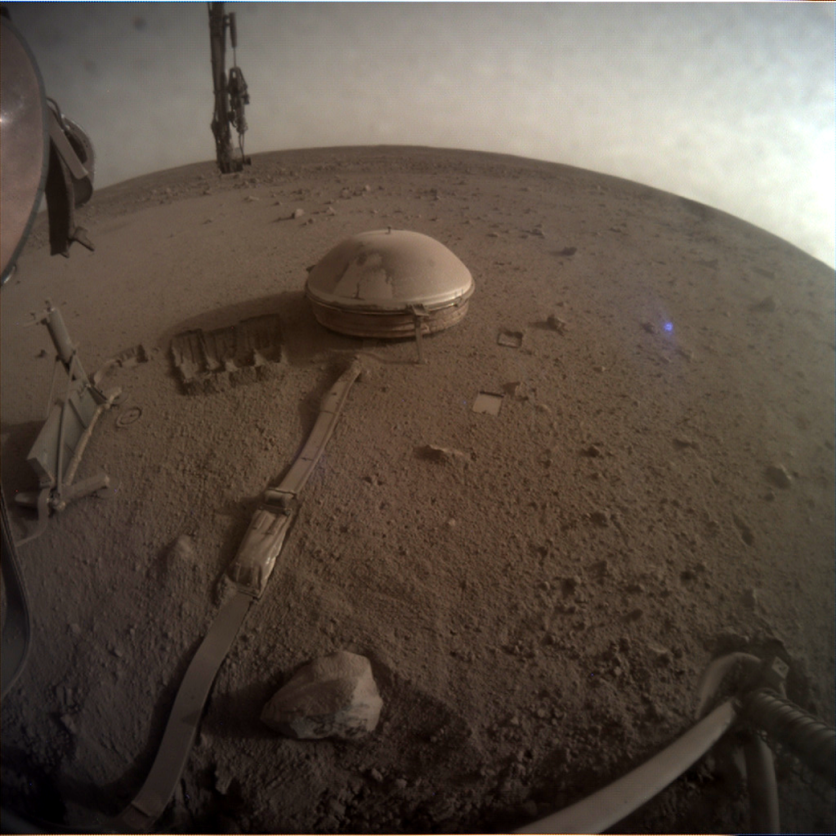NASA's InSight Mars lander has been surveying the Martian surface for quite some time, yielding comprehensive data about the planet's interior layers, weather, liquid core, and many more.
But that is until a lot of dust settled in the solar arrays of the robotic explorer, compromising its ability to generate power and continue its operations.
The solar-powered lander has been losing energy since then and it may have finally reached its last hurrah on Sunday, Dec. 18 after failing to respond to NASA's communications from Earth.

"Signing Off Here Soon"
On Tuesday, Dec. 20, the space agency shared what may be the final image and message of the Mars lander.
"My power's really low, so this may be the last image I can send. Don't worry about me though: my time here has been both productive and serene. If I can keep talking to my mission team, I will - but I'll be signing off here soon. Thanks for staying with me," the tweet reads.
NASA will officially end the mission when InSight fails two consecutive communication attempts with the spacecraft orbiting the planet, which is a part of the Mars Relay Network.
However, this will only happen if the lander itself is to blame for the missed communications.
Read Also : Mars 'Megatsunami' Came from a Massive Asteroid that Collided with the Planet 3.4B Years Ago
InSight's Last Steps
The InSight mission's last steps include archiving its vast amount of data and making it available to researchers all over the world.
The lander data has revealed information about the layers of Mars' interior, its liquid core, the changeable remnants of its mostly defunct magnetic field beneath the surface, the weather in this region of Mars, and quake activities.
Ever since the lander reached the Martian surface in November 2018, more than 1,300 marsquakes have been recorded by InSight's seismometer, which was donated by France's Centre National d'Études Spatiales (CNES). The largest of these quakes was magnitude 5.
InSight also captured quakes caused by meteoroid impacts. Studying how the seismic waves from those quakes change as they pass through the planet can help astronomers understand how all rocky planets, including Earth and its Moon, work in addition to giving us a crucial view into Mars' interior.
"Finally, we can see Mars as a planet with layers, with different thicknesses, compositions," Bruce Banerdt, the mission's principal investigator, said in a statement.
The seismometer results will be included in NASA's Planetary Data System alongside the only other collections of seismic data from extraterrestrial sources, including the Viking and Apollo Mars missions.
On May 5, 2018, InSight was launched from Vandenberg Air Force Base in California. InSight touched down on Mars following a six-month voyage on Nov. 26, 2018.
Surface operations at Elysium Planitia started from the get-go, but science data collecting officially commenced 10 weeks after landing.
This is due to the fact that InSight's science goals and instruments are very distinct from other Mars mission rovers. NASA said that the lander's activities are more of a marathon than a sprint.
But soon or late, InSight may finally cross the finish line of its mission.
Related Article : Scientists Find Compelling Evidence of Life on Mars in Jezero Crater's Trove of Organic Materials

![Apple Watch Series 10 [GPS 42mm]](https://d.techtimes.com/en/full/453899/apple-watch-series-10-gps-42mm.jpg?w=184&h=103&f=9fb3c2ea2db928c663d1d2eadbcb3e52)



